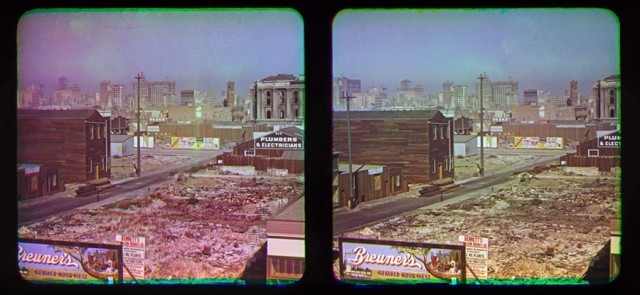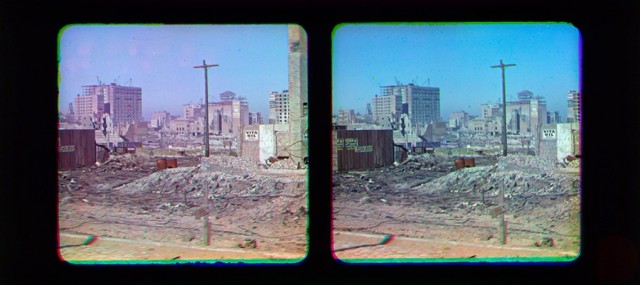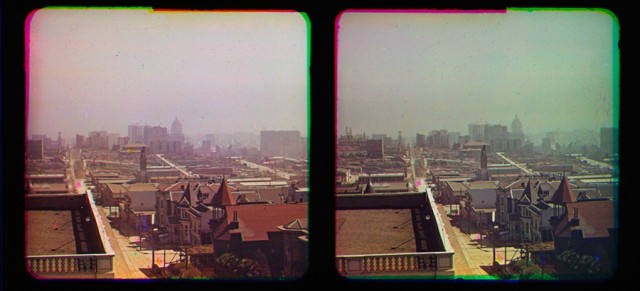Color Photos of San Francisco Taken After 1906 Earthquake & Fire
Last week, the AP reported on a startling find from the Smithsonian Institution: the earliest known color photographs of San Francisco, which also may be the only known color photos of the aftermath of the 1906 earthquake and fire. And they are stereoscopic!
Wait — was there even such a thing as color photography in 1906? In fact there was. The science behind color photography was introduced in the 1850s, and by the early 20th century there were pioneers around the world racing to invent a commercially viable means of bringing photos to life with color. Among them was Frederick Eugene Ives, the man behind the camera that took these images.
Ives’ color process was called “Kromskop” (pronounced “chrome-scope”). Wikipedia’s entry on color photography has some great details:
The color images, dubbed “Kromograms,” were in the form of sets of three black-and-white transparencies on glass, mounted onto special cloth-tape-hinged triple cardboard frames. To see a Kromogram in color it had to be inserted into a “Kromskop” (generic name “chromoscope” or “photochromoscope”), a viewing device which used an arrangement of colored glass filters to illuminate each slide with the correct color of light and transparent reflectors to visually combine them into a single full-color image. The most popular model was stereoscopic. By looking through its pair of lenses, an image in full natural color and 3-D was seen, a startling novelty in the late Victorian age.
The results won near-universal praise for excellence and realism. At demonstrations, Ives sometimes placed a viewer displaying a still-life subject next to the actual objects photographed, inviting direct comparison. A Kromskop triple “lantern” could be used to project the three images, mounted in a special metal or wooden frame for this purpose, through filters as Maxwell had done in 1861. Prepared Kromograms of still-life subjects, landscapes, famous buildings and works of art were sold and these were the Kromskop viewer’s usual fodder, but a “multiple back” camera attachment and a set of three specially adjusted color filters could be bought by “Kromskopists” wishing to make their own Kromograms.
Ives is also famous for his contributions to the halftone reproduction process, whereby photographs are reduced to a series of dots to aid in print reproduction, a technique still used today.









